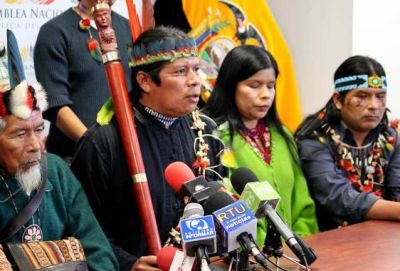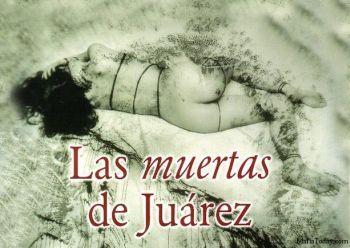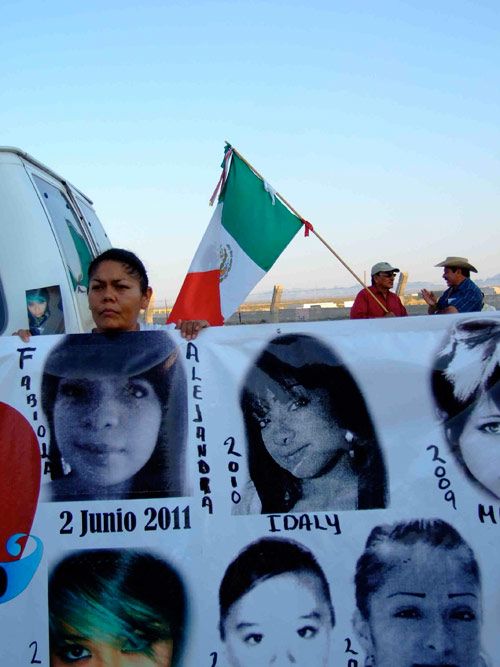
Publisher:
Bonnie King
CONTACT:
Newsroom@Salem-news.com
Advertising:
Adsales@Salem-news.com

~Truth~
~Justice~
~Peace~
TJP
Jun-02-2012 15:37

 TweetFollow @OregonNews
TweetFollow @OregonNews
Femicide on International Trial Again
Kent Paterson for Salem-News.comThey were all “pretty,” coming from lower middle class and poorer socio-economic backgrounds.
 Artist's conception of Monica Janeth Alanis, from blueraingallery.com |
(LAS CRUCES, NM) - One March day back in 2009, 18-year-old Monica Janeth Alanis went to school at the Autonomous University of Ciudad Juarez. She has not been seen or heard from since then by her family.
 Just 18 years old, now gone forever? |
More than three years later, the missing student’s parents, Ricardo Alanis and Olga Esparza, still have no leads on the whereabouts of their daughter, according to the father.
Worse yet, Mexican law enforcement authorities have “paid no attention to us,” Alanis charged, as he walked around a university auditorium with sad eyes and a large poster of Monica covering his body.
Frustrated to no end, Alanis and his wife appeared at the recent Ciudad Juarez session of the Permanent People’s Tribunal (TPP), an international court of conscience that considers and denounces human rights violations in different parts of the globe.
Alanis and Esparza are far from alone in their painful odyssey. Members of the Ciudad Juarez-based Mothers and Relatives Committee of Disappeared Daughters, the couple is helping press the cases of 40 teenagers and young women who have vanished in the border city since 2009.
“Young women continue disappearing,” Esparza said. “It is a grave situation.” According to Alanis, the disappeared share a lot in common. They were all “pretty,” coming from lower middle class and poorer socio-economic backgrounds. As many as 30 of the 40 missing young women seemingly vanished into thin air after reportedly going to downtown Ciudad Juarez, some to look for a job, he said.

Escalating their campaign, the relative’s group staged public demonstrations in Ciudad Juarez during the Mother’s Day and Student’s Day holidays last month.
The local press also covered a May 26 demonstration held outside the state prison in Ciudad Juarez by relatives and supporters of Marisela Gonzalez Vega, a 27-year-old mother of four who disappeared after visiting a brother incarcerated at the facility.
The disappearances handled by Alanis’ group bear an uncanny resemblance to earlier cases that stunned Ciudad Juarez and the world from about 1993 to 2003. And like the previous instances, some of the missing have been found dead in a similar manner, discovered in clusters in the same location.
 |
Since last fall, the bodies of more than a dozen young women have been recovered from the Juarez Valley The disappearances that first began to be publicized nearly 20 years ago seemed to have tapered off after local, national and international protests pressured the Mexican government. But after widespread violence consumed Ciudad Juarez beginning in 2008, the pattern of disappeared and murdered young women resumed.
Lucha Castro, veteran Chihuahua City attorney and co-founder of the Women’s Human Rights Center, said in a TPP hearing that murders and disappearances of women related to various causes went off the map in her state by 2010, greatly exceeding the numbers of earlier years when mothers and other relatives began loudly protesting.
“Nonetheless, nobody listened to them and now we have this panorama,” Castro said.
Echoing victims’ relatives from a decade or two ago, Alanis and Esparza demand international intervention. “Authorities don’t want to pay attention to this problem,” Alanis asserted. “That’s why we are asking for international institutions to come and check and see if (authorities) are working.”
 |
A big difference between now and then is that the Mexican state is under an obligatory court order from the Costa Rica-based Inter-American Court of Human Rights to seriously address the pattern of disappearances, punish the perpetrators of earlier femicides and take measures to prevent violence against women. Arguably, the disappearances of women after the Court’s 2009 sentence, especially those that occurred in downtown Ciudad Juarez, which had long been exposed as a dangerous zone, violated the legal orders.
The Calderon administration and the Chihuahua state government maintain that the Mexican state is complying with the Inter-American Court sentence, a ruling that hailed from complaints filed by the mothers of three young women who were found similarly murdered in a Ciudad Juarez cotton field in 2001.
In a 2011 statement, Mexico’s federal Interior Ministry said two of its departments were responsible for implementing the sentence’s orders in coordination with local, state and federal officials.
Since the Inter-American Court sentence was handed down, different government agencies have built a monument for the murdered women, publicized the legal ruling, conducted trainings of personnel and taken some other actions.

On its website, the Chihuahua state prosecutor’s office urges public involvement. “We invite citizens to collaborate with the authorities to locate women with missing and/or absence reports, and to contribute information about their whereabouts,” the website states.
Of the numerous missing cases listed on the state government’s website, only some of them are accompanied by photos and other identifying characteristics.
Cecilia Espinosa, member of the Women’s Roundtable of Ciudad Juarez, concurred with Alanis that the government is not in compliance with the Inter-American Court. The same general situation for women denounced in the cotton field case prevails, but with “more gravity in the city” than before, Espinosa said.
Assorted crimes against women in Ciudad Juarez, the state of Chihuahua and other parts of Mexico were heard by a panel of TPP judges drawn from various nations. Judge Nora Cortinas, longtime activist with Argentina’s Mothers of the Plaza Cinco de Mayo, noted that rape and sexual abuse had been declared crimes against humanity in her own country.
TPP Judge Alejandro Teitelbaum was especially moved by the testimonies of rape survivors who accused Mexican security forces of committing the crimes.
 |
“On the one hand, there is violence and disdain against women, who are treated like things. This comes from a state origin or a quasi-state origin through members of the armed forces and the police,” Teitelbaum said in an interview. “But there is also a generalized violence against women that comes from a macho culture in Mexico that probably goes back centuries. In such circumstances, women are considered inferior to men.”
Teitelbaum said evidence pointing to a lack of will or capacity by the government to protect its citizens raised the question of armed self-defense. The Argentina-born international lawyer noted that Article 10 of the Mexican Constitution allows citizens to possess non-military grade weapons in their houses, though the right was modified in 1968 (the year of the government’s bloody crackdown against pro-democracy student protesters) to restrict carrying arms outside the home.
“Considering the systematic aggression that women especially suffer-kidnappings, murders, rapes-it could be necessary for the government to pass a law regulating the use of firearms by vulnerable persons who are most likely to suffer aggressions when they go out onto the street,” Teitelbaum said.
He said that legitimate defense is a fundamental legal principle of most nations’ laws, adding that U.S. citizens just across the border from Ciudad Juarez enjoy the right to own and pack firearms.
Although the TPP is a non-governmental body that lacks legal authority, local activists said they hoped it would add one more international voice to help curb the violence and human rights violations that have plagued Ciudad Juarez and Mexico for decades. At the conclusion of its Ciudad Juarez session last week, the TPP urged the International Criminal Court in Europe to examine cases from Mexico.
Victoria Caraveo, former director of the Chihuahua Women’s Institute and co-founder of Mothers in Search of Justice, said the TPP was an opportunity for people to pull together in a common pursuit for justice and change. “This is one struggle. We are one country and we are all Mexicans,” Caraveo said. “Let’s leave aside many things that divide us, look at each other as brothers and sisters, so we can move forward this fantastic country together with the advice of the tribunal.”
The TPP joined a long list of national and international institutions and organizations, both governmental and non-governmental, which have issued resolutions, recommendations and orders on gender violence in Ciudad Juarez and Mexico. These include the United Nations, the European Parliament, the Mexican Congress, the Inter-American Commission for Human Rights, the Inter-American Court of Human Rights, Amnesty International, the U.S. Congress, the New Mexico State Senate, the El Paso City Council, and others.
-Kent Paterson
Frontera NorteSur: on-line, U.S.-Mexico border news
Center for Latin American
and Border Studies
New Mexico State University
Las Cruces, New Mexico
 |
 |
 |
 |
 |
 |
Articles for June 1, 2012 | Articles for June 2, 2012 | Articles for June 3, 2012

Salem-News.com:
googlec507860f6901db00.html



Terms of Service | Privacy Policy
All comments and messages are approved by people and self promotional links or unacceptable comments are denied.
[Return to Top]
©2025 Salem-News.com. All opinions expressed in this article are those of the author and do not necessarily reflect those of Salem-News.com.